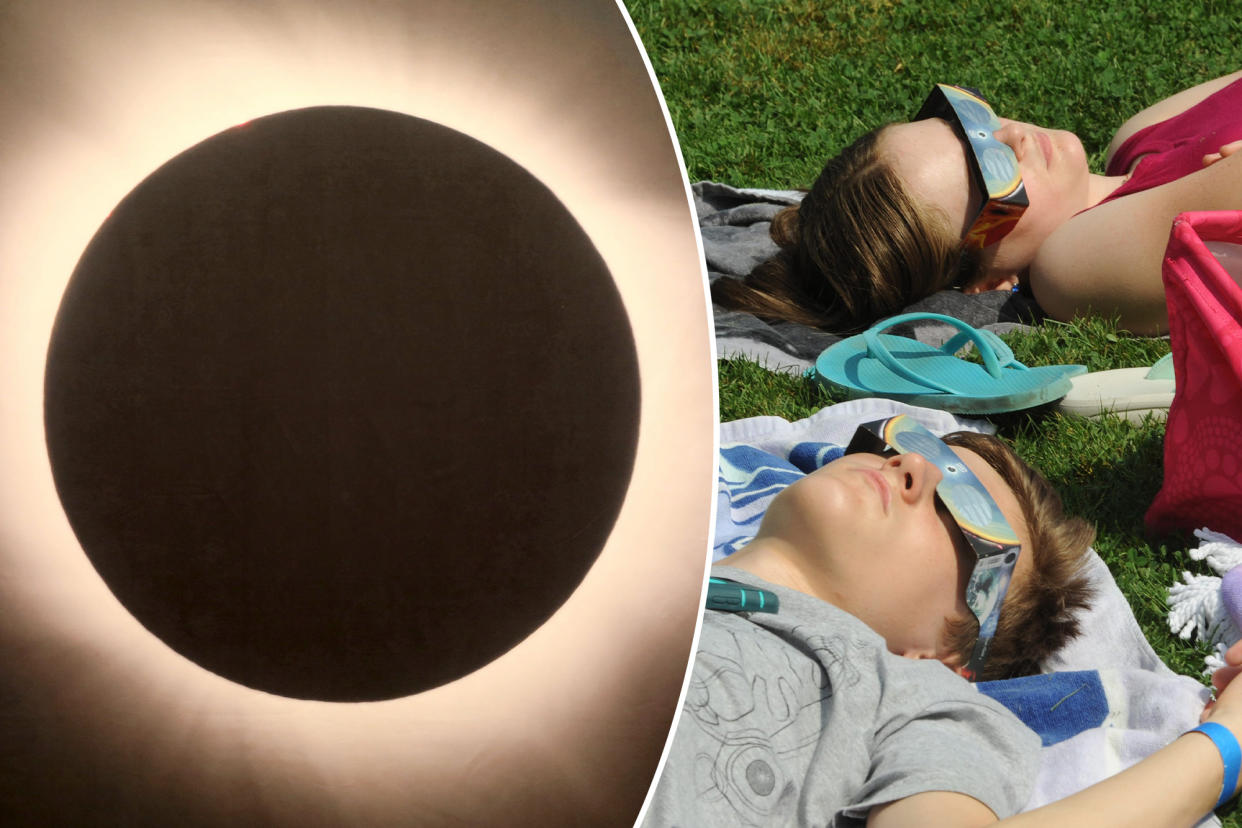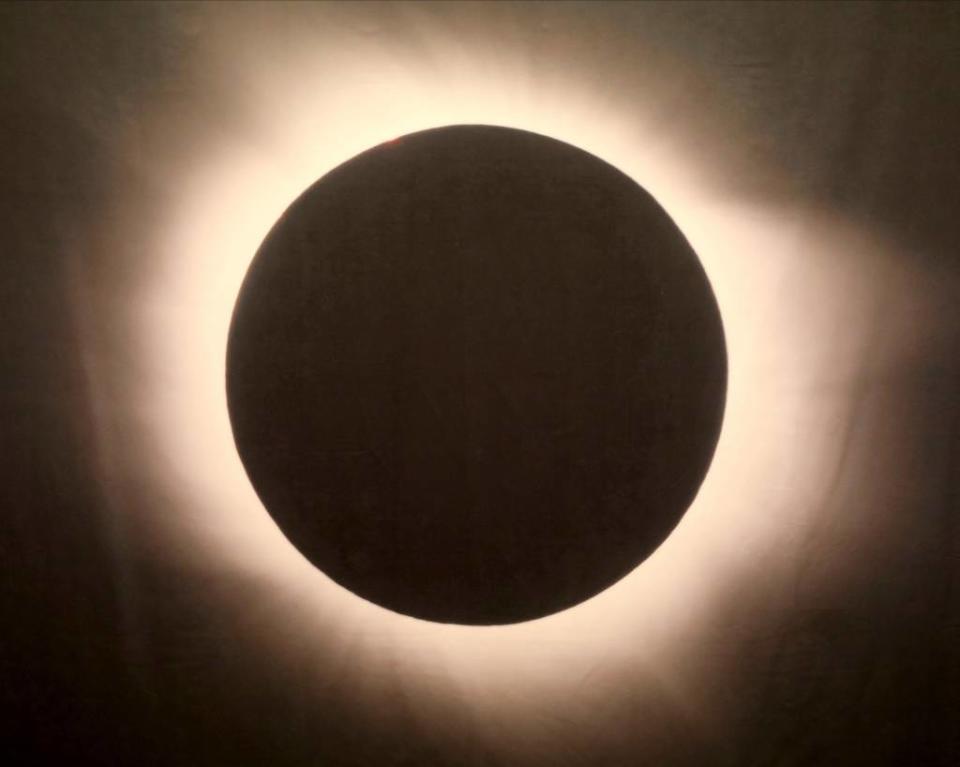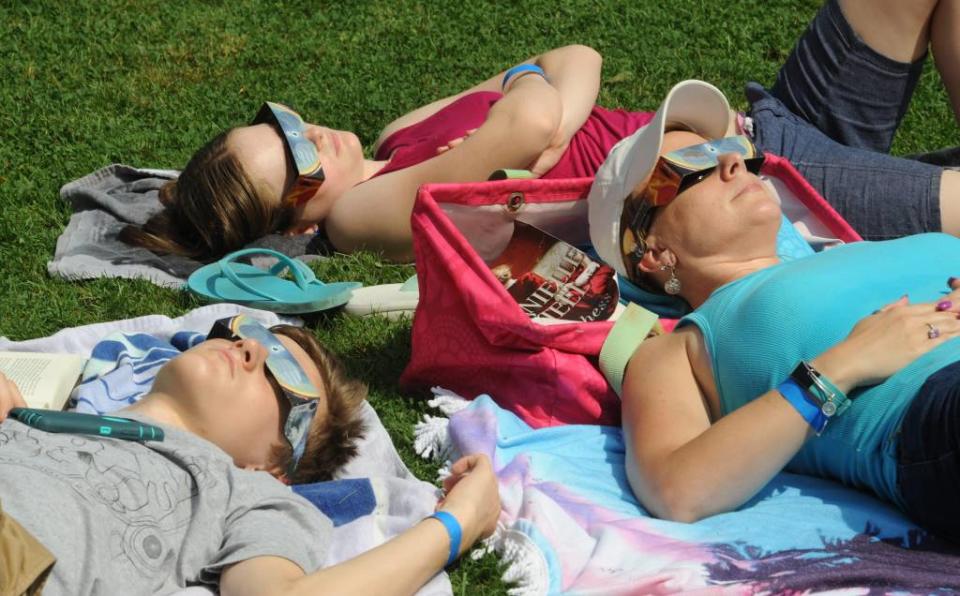That $500 hotel room you booked for the eclipse may be a big waste of money — here’s why

- Oops!Something went wrong.Please try again later.
This total eclipse could be a total bust.
People are traveling all across North America to get the best view of the rare solar eclipse on April 8 — but just days before the big event, experts are warning that the widely-publicized path of totality could be subject to change.
That’s no doubt troubling news to the scores of adventure seekers sparing no expense to witness the once-in-a-blue-moon event.

The path — where the moon will block out the light of the sun completely — cuts a 115-mile swath all the way from southwest Texas to eastern Maine, although a partial eclipse will be visible throughout all 48 contiguous U.S. states, weather permitting.
But these frequently-shown maps — which have already been updated at least once — ought to come with a number of disclaimers, the pros say.
Because the size of the sun is actually unknown, the width of the path of totality may be slightly narrower than previously predicted. That means some towns and cities that were previously believed to be within the zone may find themselves just outside.
“Calculations that use a slightly larger radius for the size of the sun yield an eclipse path that is slightly narrower,” Dr. Michael Kirk, a research scientist in the Heliophysics Science Division at NASA’s Goddard Space Flight Center, told Thrillist.
“This difference would…affect cities on the very edge of the path of totality, where blanket predictions are difficult regardless — a few city blocks one way or the other could mean 20, 10, or 0 seconds of totality.”

The rotation of the sun could also impact which cities get a perfect view of the solar eclipse.
“Uncertainty in the Earth’s rotation can also affect eclipse predictions on this level,” Dr. Kirk explained.
To make sure you have the best chance of seeing the total solar eclipse, for as long as possible, Kirk recommends getting as close to the center of the zone of totality as possible.

“Traveling towards the center of the path of totality—even a mile or two—will quickly increase the length of totality that people can see,” Dr. Kirk said.
Solar eclipse fans may also have their view ruined by the weather — many Great Lakes cities like Buffalo and Cleveland are notorious for cloudy conditions.
If the sky is obscured by clouds, viewers may not be able to view the magnificent stages of the eclipse, including first contact, when the Moon first takes a bite out of the Sun, and the diamond ring that occurs just before totality.
For those who aren’t in the select cities, NASA is offering several hours of streaming online and on NASA TV starting at 1 p.m. from several locations along the totality path.
The Associated Press will also livestream the event starting at 10 a.m. with views from Mazatlán, Mexico, and other locations. Commentary will run from 1:30 p.m. to 3:30 p.m. featuring interviews with organizers, scientists and live views from along the path.
This will be the last total eclipse visible in the United States until 2044.

